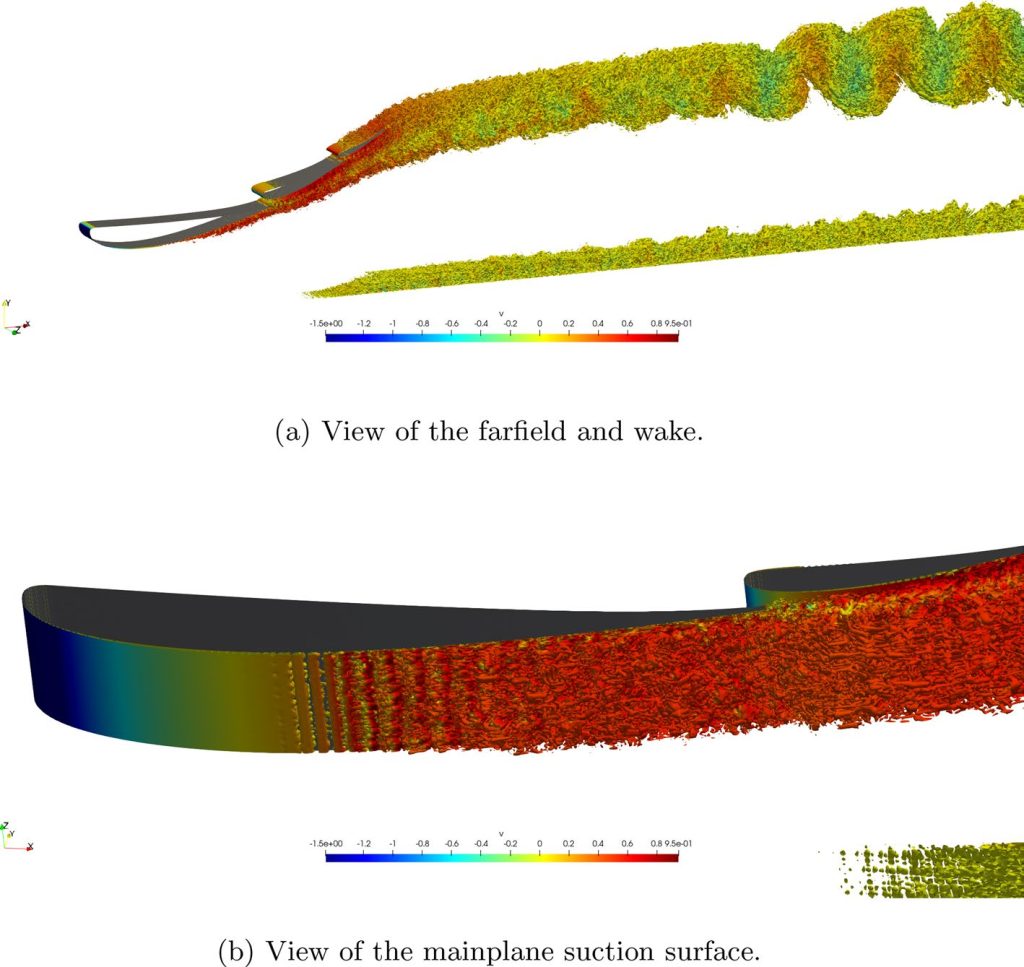Large Eddy Simulation of an Inverted Multi-element Wing in Ground Effect
Slaughter, J., Moxey, D., & Sherwin, S.
DOI: 10.1007/s10494-023-00404-7
Abstract:
Due to the proprietary nature of modern motorsport and Formula 1, current scientific literature lacks relevant studies and benchmarks that can be used to understand flow physics in this area, as well as to test and validate new simulation methodology. With the release of a new, open-source geometry (the Imperial Front Wing), we present a computational study of a multi-element aerofoil at a ride height of 0.36h/c and a Reynolds number of 2.2×105. A 0.16c slice of the Imperial Front Wing has been examined using high-order spectral/hp element methods. Time averaged force data is presented, finding lift and drag coefficients of −8.33 and 0.17 respectively. Unsteady analysis of the force and surface pressure data has allowed salient feature identification with respect to the transition mechanisms of each element. The mainplane and flap laminar separation are studied and the cross-spectral phase is presented for the lower frequency modes. At St=40 an in-phase relationship is identified between mainplane and flap laminar separation bubbles, whilst at St=60 a distinct out-of-phase relationship is observed. Wake results, including wake-momentum deficit and turbulent kinetic energy are presented, which show wake meandering and subsequent breakdown due to a Kelvin–Helmholtz instability. These results, in particular the transition mechanisms, will allow for the construction of a dataset to validate novel methods in this area.
